Showing 71–80 of 134 results

Many learned people, from various sects, have written about death and soul. Ceremonies, after death, for honouring the dead, especially in Hindu religion have been dealt chronologically. Also the importance of cloning after death and its resultant impact on society has been discussed.
Many learned people, from various sects, have written about death and soul. Ceremonies, after death, for honouring the dead, especially in Hindu religion have been dealt chronologically. Also the importance of cloning after death and its resultant impact on society has been discussed.
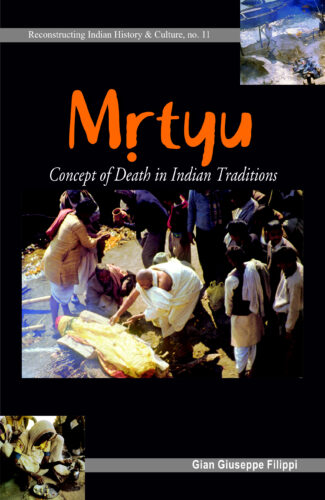
Professor Filippi explores the Indian view of mortal existence from an individuals conception to his/her journey to the Kingdom of Yama with rare scientific objectivity by unveiling a complex network of sentiments, beliefs, scriptural references, customs, etc.
Yama, in Hindu mythology, is the eschatologist and god of death. And is, thus, dreaded. Even in todays India, there is a fearful hesitancy, if not conscious avoidance, of any talk about him. Yet, paradoxically, the phenomenon of death does not evoke a similar fear in the Indian psyche accepted, as it is, a natural event, a part of life: just like poverty, sickness and old age. Here is an insightful, at once compelling exposition of the phenomenon of death, based on plurimillennial tradition of the Hindus which, despite the affirmation of Western attitudes in certain elitist sections of the urban society, has endured since the times of the Vedas and Indic Civilization. Exploring, contextually, the age-old Indian view of mortal existence: from the very moment of an individuals conception to his/her journey to the Kingdom of Yama through the major phases of birth, growth and ageing, Professor Filippi unveils a complex network of sentiments, beliefs, scriptural references, customs, hopes, ritualistic practices and much else relevant to the great adventure of death. Notwithstanding the sentimental undertones of the mrtyu-theme, Dr. Filippis work outstands for its rare scientific objectivity. It has grown from years of his rigorous research effort involving not only his extensive studies of Indian literature: classical as well as modern, but also his interviews with Indian samnyasins, brahmanas, relatives of the dead, and the persons living around the cremation grounds. Together with visual material, bibliographic references, and a glossary of non-English terms, the book holds out as much appeal to the general reader as to the specialist.
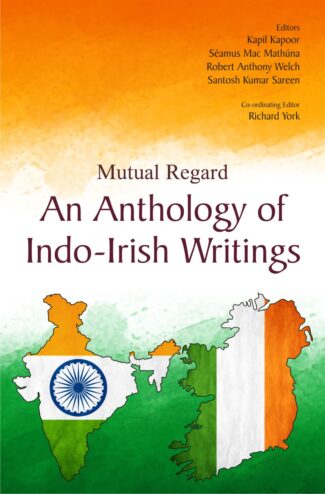
This is an anthology of parallel texts from the Irish and Indian intellectual traditions. It shows that, despite major differences between the two countries, contacts and similarities between them have been substantial. It records testimonies of Irish people and Indians who have visited the respective countries.
This is an anthology of parallel texts from the Irish and Indian intellectual traditions ranging over what scholars have said about the two countries histories of turmoil, their philosophies of mind and being, their myths and fantasies, their contemplative imagination as expressed in their lyrical poetry, their learning in medicine, history, linguistics and poetics, the records left about them by Irishmen who came to India and by Indians who went to Ireland, and the contemporary engagements between the two countries.
The volume shows that, despite major differences between the two countries, contacts and similarities between them have been substantial. The recorded testimonies of Irish people and Indians who have visited the respective countries demonstrate that in both cases the experience has been a warm and encouraging one, which has led the visitor to become more aware of what is meant by nationality, what he or she has acquired from his or her country of origin and what he or she has gained by contact with another society and another culture. That the two appear to share the same spirit of the self is attested by the fact that they both end up in the twentieth century, by coincidence or destiny, with the symbolism in their flags of the same three colours orange, white, and green.
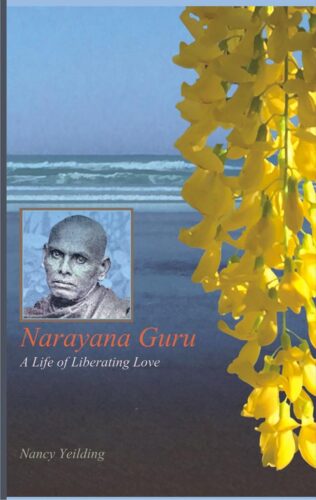
Here is a biography of Narayana Guru, which introduces him, faithful to his true form, as an embodiment of Wisdom. Although most extant biographies of the Guru were written by persons belonging to his own geographical and cultural background, this one stands an exception in this respect.
Narayana Guru’s major contribution to world culture comes from the example of his personal life and his philosophical and mystical writings in Malayalam, Tamit and Sanskrit. Both the cream of the ancient Dravidian culture preserved by the Tamil language and the Upanishadic wisdom enshrined by the Sanskrit language found their confluence in the writings of Narayana Guru. His mystical hymns are both inspiring and elevating. Without watering down the emotional fervor of devotion, he used these poems as a means to restate his philosophy of unitive understanding. Today, scholars all over the world are finding in his writings new avenues to approach the eternal riddles of life. The universal and thoroughgoing ethical norms enunciated by him are well suited to be used as the normative basis for the world order of a unified human family. His insight into psychology opens up the mysterious depths of the human mind and spirit, and if it is properly pursued, we can discover in its light the meaning and purpose of our life in the here and now, and the secret of establishing harmonious relationships with the rest of the world. -Guru Nitya Chaitanya Yati
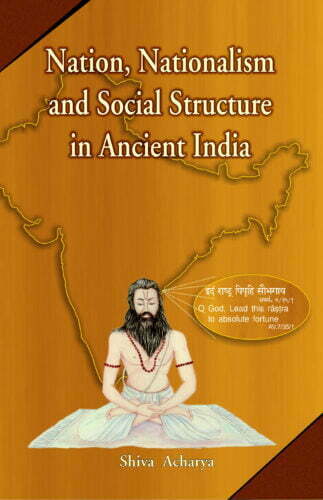
This book analyses various aspects of Vedic culture, exploring the origin of the concepts of rastra (nation) and rastrabhakti (patriotism). It presents the salient features of nation and nationalism in ancient Indian culture culture- based and not political which helped India to emerge successful.
The concepts of nation and nationalism are generally considered as having their genesis in western modes of thought. However, in this book, Dr. Shiva Acharya attempts to show that the theories of nation and nationalism can be traced to the Vedic era on the basis of a painstaking study of the Vedic culture and civilization. The book analyses the social, political, civil and military, economic, religious and philosophical aspects of the Vedic culture to explore the origin of the concepts of rashtra (nation), motherland and rashtrabhakti (patriotism), parliaments, the notion of all-round development, democratic educational system, equality of peoples and economic growth for prosperity in Vedic times. Citing from the Vedas and other Vedic literature and a host of modern scholarly researches on the subject, it presents the salient features of the nation and nationalism theories as found in ancient Indian culture such as their stress on culture-based nationalism rather than political. It points out that these features have enabled India to continue with its past traditions and culture and emerge as a successful nation in modern times. The volume will prove indispensable to all students and scholars of Indology and general readers as it unravels the immense contributions of ancient Indian thought to ideas and philosophies that hold great sway in modern times.
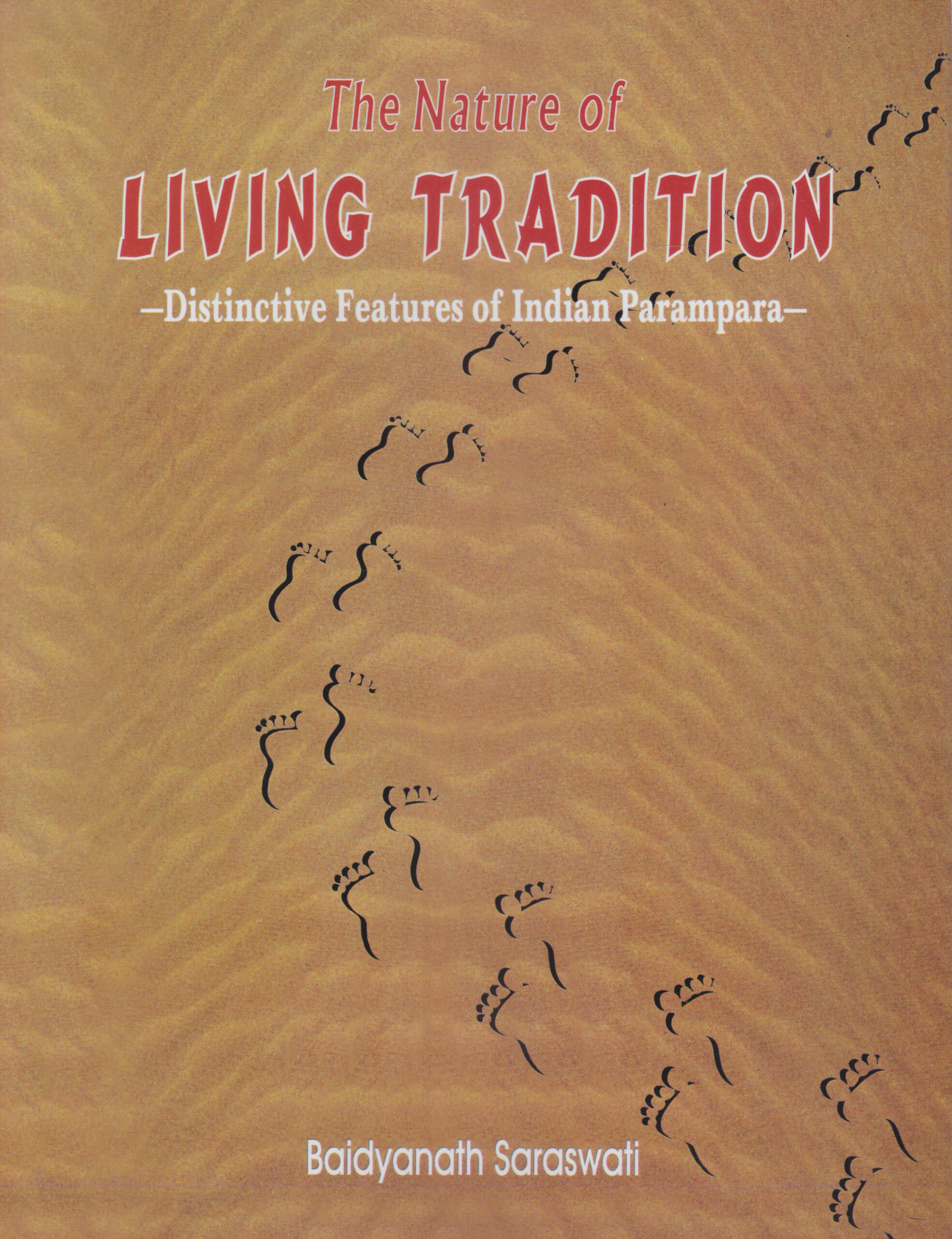
Scholars reflect on anthropological, philosophical, spiritual, musical, poetical and experiential dimensions to examine diverse questions on Indian parampara its source and transmission, the parent of its primal seed, sustaining the flow of parampara or tradition and whether the individual artist must necessarily confront parampara to sustain creativity.
Indian Parampara is a response to secular Western thought on tradition and modernity. Presented here are contributors from a distinguished group of Indian scholars representing a wide spectrum of disciplines. It raises many questions: What is the source of parampara? How is it transmitted? Does it hold in potential the characteristics of all orders of knowledge? Who was the parent of its primal seed? How does the individual sustain the flow of parampara or tradition? Is the individual artist capable of sustaining creativity and initiating change? Does he have to take the path of confrontation with parampara? How does the person transcend the small I to enlarge himself into the We? What is that experience of the Self where duality between the subject and the object is lost? To answer such central questions the authors of this volume reflect on anthropological, philosophical, spiritual, musical, poetical, and experiential dimensions. This book is an important contribution to traditional thought and culture.

This critical edition of Nitiprakasika, while unveiling Rajaniti and Dhanurvidya, compares it with the Vedic literature and a few medieval comparative texts on polity. It also discusses in detail the weapons and training on them, military organization, battle arrays, types of war, ethics of war, psychology and philosophy of Dhanurvidya among many other aspects.
The experiences and knowledge from our past are recorded in manuscripts which have been handed down to us over several thousand years. The Government of India, through the Department of Culture, took note of the importance of the vast tangible heritage and, in order to preserve and conserve as well as to make access to this wealth easy, established the National Mission for Manuscripts. In order to disseminate the knowledge content of manuscripts, the Mission has taken up several programmes such as lectures, seminars and workshops. The Mission has published the proceedings of the above-said programmes under the following series: Samrakshika (on conservation), Tattvabodha (comprises lectures based on some manuscripts delivered by eminent scholars), Samikshika (research-oriented papers as presented in the seminars), and Kritibodha (transcribed and edited text prepared at advance level manuscriptology workshops conducted by the NMM.
The National Mission for Manuscripts has taken up a project for publishing rare and unpublished manuscripts in three formats (a) Facsimile, (b) Critical edition (illustrated and single copy manuscript), and (c) Critical edition with annotation and translation. This new series has been named as Prakashika. Nitiprakashika critically edited by Dr Urmi Shah comes under this Prakashika series.
Nitiprakashika is a treatise delineating Nitishastra, i.e. Rajaniti and Dhanurvidya scripted by Sage Vaishampayana who learnt it from his guru Veda Vyasa and became the master of its Taittiriya branch, and revealed it to the King Janamejaya.
This critical edition makes a detailed study of Nitisastra and compares it with the Vedic literature, Dharmasastras, Kautilyas Arthasastra, Ramayana, Mahabharata, Dhanurveda Samhitas, Kamandaka Nitisara, Sukra-Nitisara and a few medieval comparative texts on polity along with some regional works on Rajaniti. It also discusses in detail the weapons and training on them, military organization, battle arrays, types of war, ethics of war, psychology and philosophy of Dhanurvidya, and the critical text of Nitisastra with Sitaramas commentary Tattvavivrti in Sanskrit with English translation.
This high-value academic work should entice all who are desirous of knowing about the ancient philosophy on war, warfare and polity, and serve them as a referral book on Rajaniti and Dhanurvidya.

The book in its attempt to study various aspects of the Vedas presents a detailed study of Indian traditionalists on the Vedic literature from Veda VyÀsa to SÀyaõa and other famous ÀcÀryas. While exploring all important commentaries on the Vedas it brings under spotlight the leading Western scholars and modern Indian thinkers and commentators.
With elaborate notes on legends of the Vedas, the book attempts to study various aspects of the Vedas. It presents a detailed study of Indian traditionalists on the Vedic literature, beginning from Veda Vyasa to Sayana and other acaryas including modern saint-scholars. It also views researches of the Western scholars and historians who have critically studied various aspects of the Vedic corpus. It conducts an in-depth exploration of the commentaries on the Vedas, focusing on noted traditional Vedic commentators like Yaska, Jaimini, Kumarila Bhatta, Sayana and Mahidhara as also the modern Indian commentators including Swami Dayananda, S.D. Satavalekar, Sri Aurobindo, Devi Chand, Sriram Sharma and the Western commentators like H.H. Wilson, F. Max Müller, R. Roth, A. Weber, W.D. Whitney, A.B. Keith, and R.T.H. Griffith.
The volume deliberates on definition of the Vedas, division of the Vedas and various shakhas of the five Samhitas as well as a list of Samhitas, Brahmanas, Aranyaka and Upanishad that are extant. It delves into details of the Rigvedic Mandalas and the Yajurveda, Samaveda and Atharvaveda with reference to their subject matter, divisions and even their cultural value. It also examines the phenomenon of oral tradition, especially in conveying the Vedas and secret of preserving the Vedas – Vedic chanting. It has numerous illustrations that include maps, charts and pictures.

The essays capture the changing contours of Orissan society, economy, religions, cultural life and art expressions. It embraces diverse specificities from every epoch of Orissan history and focuses on its archaeological remains, ancient maritime activities, Vaisnavite sculptures, etc.
Lying on Indias eastern coast, Orissa is the legendary old-world Kalinga. Which, conquered by Ashoka, metamorphosed this terrible triumphant emperor into a compassionate, remorse-stricken votary of the Buddhist faith. Today as ever before, Orissa not just has its share in Indias glorious cultural heritage, but epitomizes its architectural marvels and at once fascinating sculptures, including the erotic figurines frozen in stone. And these are best reflected in Orissas profusely sculptured temples, like the Sun-gods at Konark, Lord Jagannaths at Puri, and Lingarajas at Bhubaneshwar; besides the Jaina/Buddhist rock-cut caves of Khandagiri, Udayagiri and Dhauli. This felicitation volume, occasioned by Professor Mishras retirement, in 1997, from the University of Sambalpur, captures the changing contours of Orissas society, economy, religions, cultural life, and art expressions: from the earliest times to almost the present day. In 29 essays, each authored by an area specialist, the volume embraces diverse specificities from every epoch of Orissan history, focussing notably on its prehistoric painted rock shelters, archaeological remains, ancient maritime activities, major and minor religions, Vaisnavite sculptures, stellate temples, development of education and, besides these, its various tribal, revolutionary and socio-religious reform movements during the colonial rule. Professor P.K. Mishra, (born: 19 Jan. 1937), is a distinguished Orissan historiographer, extensively published author, and scholar with wide-ranging specialized interests. Recipient of two prestigious Senior National Fellowships (of ICHR and UGC), he has also surveyed and documented the monuments in Upper Mahanadi Valley on a Ford Foundation Project.

This volume thus provides the psychological context and the relevance of studies of yoga, based on Patanjalis Yogasutra, for advancing the existing psychological knowledge. Yoga psychology provides the foundation for Indian psychology, an emerging discipline rooted in classical Indian tradition, and enables one to experience self-actualization in life.
Patanjalis Yogasutra: A Psychological Study is an attempt at an English translation of Patanjalis Yogasutra with commentary rendered in current psychological idiom. It features an extensive Introduction to the context and attempts to draw out conclusions on the implications of yoga theory and practices to current psychological knowledge.
Yoga paradigm goes well beyond what is currently in vogue and provides a more fruitful model for studying and understanding human nature, both hidden and manifest. This volume thus provides the psychological context and the relevance of studies of yoga for advancing the existing psychological knowledge. Yoga psychology provides the foundation for Indian psychology, an emerging discipline, rooted in classical Indian tradition.
According to Indian psychology, the person is a unique composite of body, mind and consciousness, making a qualitative distinction between mind and consciousness. Self-actualization, the ultimate aim of a person, is realized by cultivating consciousness as-such, resulting in a kind of psycho-spiritual symbiosis, enabling a person to experience an all-around transformation.
| There are no products |